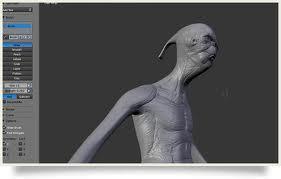How Blender Works
Blender is a free, open source 3D creation and animation software. Blender uses powerful features and creative design options to allow users to create a wide variety of realistic art. While Blender is a free software, it is ranked among some of the most powerful 3D creation programs in the world and is used by home users and film makers alike to create everything from simple animations to full-length movies. Blender is a small program that can be downloaded to the user’s computer and is supported by all major operating systems including Windows, Mac OS X, and Linux.
Modeling
Blender has a powerful feature called Modeling that allows users to create 3D models of actual objects. Modeling involves sculpting, painting, and angle adjustments and is mostly used to create faces, characters, and other objects. Blender’s Modeling feature allows users to program, design, and edit 3D models through the use of comprehensive and intuitive tools. Once the user has created a basic model, he/she can smooth out any rough edges, pull sections of the model to create a more realistic design, and use preset configurations to make the model as unique as possible.
Rigging
Rigging is similar to modeling but involves creating a more mechanical animation rather than a realistic model. Rigging allows users to create a 3D image that not only looks realistic but also has the ability to move and interact with other objects. Blender’s Rigging feature gives users the ability to create joints, paint by vertex weight, view models in a transparent view, and create bone structures. Rigging is designed to reduce flaws and deformations and features a Python-based editor that allows users to program new functions for tasks that cannot already be done in Blender.
Rendering
Rendering is a feature in Blender that allows users to compile their finished 3D images and models into one, realistic view. Rendering is most often used for creating background scenes and can be used to provide characters with an environment in which to interact. Rendering includes a wide variety of special effects including halo, fog, lens flares, UV map baking, motion blur, oversampling, defocusing, ambient occlusion, edge rendering, and toon shading. Blender’s Rendering features a very powerful rendering engine equipped with a script exporter, radiosity solver, and interactive preview option.
Animations
Blender is famous for its ability to create powerful, realistic animations that are used in home projects, cartoons, and even full-length films. Blender’s Animations feature allows users to create animations through other features such as modeling and rendering. The animations feature also allows users to edit and create new blendshapes and setup automatic walking cycles that allow characters to actually move around in their environment and control other objects. Blender’s Animations includes an animation editor for creating and modifying actions, character pose editor for changing how a character is standing or behaving, and the standard Python-based script editor that allows users to create their own objects and features.
Game Creation
In addition to its ability to create powerful animations, Blender is also capable of creating highly realistic and functional 3D games. Blender’s Game Creation features a logic editor for specifying rules and built-in game behaviors, Python-based script editor for creating new scenes and actions, support for vehicle dynamics, simulation generator, and collision detector. Blender users are able to choose from a wide variety of shapes and “laws of nature” that affect how the game is played and what the ultimate user sees.


Comments - No Responses to “How Blender Works”
Sorry but comments are closed at this time.